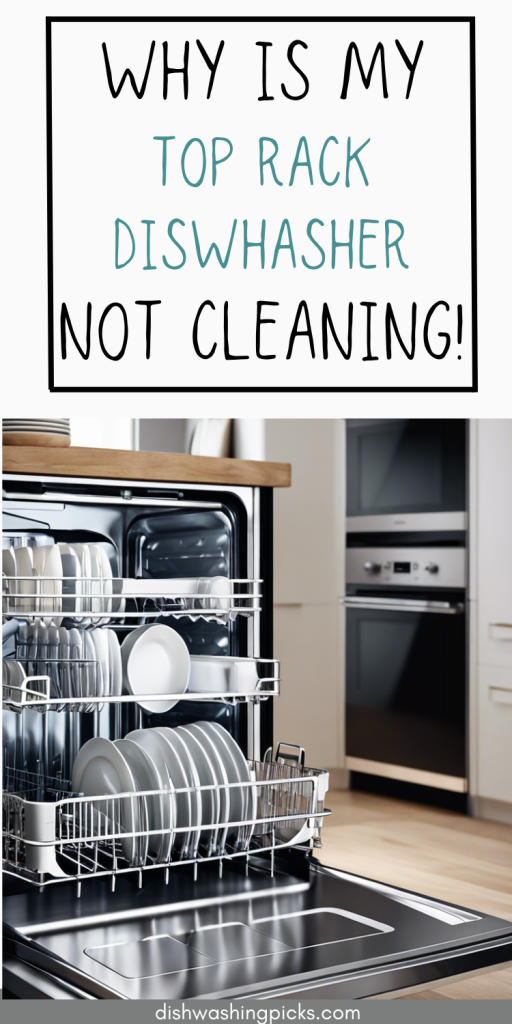
You load up your dishwasher, press start, and go about your day, expecting sparkling clean dishes when you return. But instead, you pull out the top rack and—ugh—your cups, bowls, and utensils still have food gunk on them. What gives? Why is your top rack slacking off while the bottom rack is doing all the heavy lifting?
If this sounds familiar, don’t worry—you’re not alone. There are several sneaky culprits that could be sabotaging your top rack’s cleaning power. Let’s break them down one by one and get your dishwasher back in top shape.
1. Blocked Spray Arms: Your Water Jets Are Slacking
Think of your dishwasher’s spray arms like tiny, high-powered sprinklers. They shoot water upward to blast off food particles. But here’s the thing—if those little holes get clogged with food, mineral deposits, or gunk, the top rack won’t get enough water pressure.
Fix it:
- Take out the spray arms and inspect the holes.
- Use a toothpick, needle, or a small brush to remove debris.
- Rinse under warm water and reattach.
Still not getting enough water? That leads us to the next problem…
2. Low Water Pressure: The Top Rack Gets the Short End of the Stick
Your dishwasher relies on strong water pressure to push water up to the top rack. If the pressure is weak, the bottom rack gets most of the cleaning power, while the top rack barely gets a drizzle.
Check for these pressure problems:
- Is your dishwasher overloaded? Too many dishes can block water flow.
- Is the inlet valve clogged? This valve controls water flow into the dishwasher. If it’s partially blocked, the whole system suffers.
- Are the spray arms spinning freely? If they’re jammed, water isn’t reaching the top rack.
Fix it: Run a cleaning cycle with a dishwasher cleaner to remove buildup and unclog any blockages. If the issue persists, you may need to replace the inlet valve.
3. Dirty Filter: Your Dishwasher’s “Stomach” Is Full
Did you know your dishwasher has a filter? It catches food particles to prevent them from recirculating. But if it’s clogged, dirty water might be cycling back onto your dishes instead of draining properly.
Fix it:
- Locate your filter (usually at the bottom of the dishwasher).
- Remove it and give it a good scrub under warm, soapy water.
- Clean it at least once a month to keep things running smoothly.
4. The Soap Isn’t Dissolving Properly
Ever open your dishwasher and find half-melted detergent pods or undissolved powder hanging out in the dispenser? If your detergent isn’t dissolving, your top rack isn’t getting the cleaning power it needs.
Common causes:
- The water isn’t hot enough (your dishwasher needs 120-150°F to fully dissolve detergent).
- The dispenser door is blocked (a tall dish or pan could be preventing it from opening properly).
Fix it:
- Run your kitchen sink with hot water before starting the dishwasher to ensure the first spray is hot enough.
- Check that no dishes are blocking the detergent dispenser.
5. The Upper Rack Spray Arm Is Misaligned or Damaged
Your dishwasher’s top rack has its own spray arm, but if it’s loose, cracked, or misaligned, water won’t be distributed evenly. That means some dishes get cleaned while others sit there covered in yesterday’s spaghetti sauce.
Fix it:
- Inspect the upper spray arm for cracks or blockages.
- Make sure it spins freely when you push it.
- If it’s damaged, replacing it is a cheap and easy fix.
Final Thoughts: Get That Top Rack Sparkling Again!
If your top rack isn’t cleaning properly, the good news is that most fixes are quick and easy—no expensive repairs required. Start by checking for blocked spray arms, low water pressure, a clogged filter, detergent issues, or a misaligned spray arm.
Still having trouble? Try running a dishwasher cleaner to remove any hidden buildup, or call in a professional if your dishwasher is showing signs of deeper mechanical issues.
